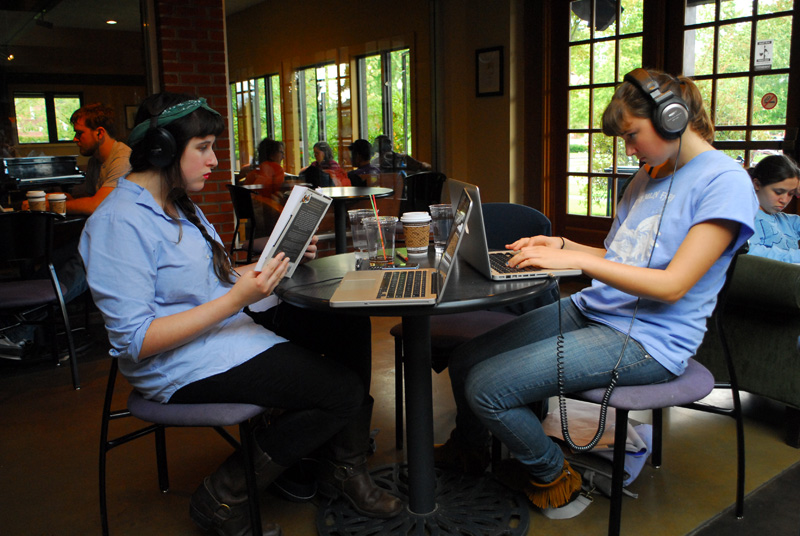
The New York Times Magazine printed an article this summer that aimed to define Americans in their twenties. In “What Is It About 20-Somethings?” Robin Marantz Henig argues that “settling down” into family life and work is undoubtedly forward development and that 20-somethings lack the motivation for progress.
There is a deep irony in Baby Boomers of The New York Times criticizing 20-somethings for stasis, a state ultimately brought on by a political system (run largely by Baby Boomers) that does not value young adults’ contributions to society. If there were any generation on whom Americans could have depended for progressive change in social and educational realms, it would have been the Baby Boomers.
Henig wrongly blames 20-somethings for their parents’ failures that stunted American society. A more worthwhile discussion would focus on how to remedy limitations that face young adults.
“What Is It…” begins with iPhone photographs taken by 20-somethings that purportedly “capture the identity of their generation.” Most of the photographers are lounging around Brooklyn, smoking cigarettes or sitting in a park. This visual rhetoric sets the article’s tone, incorrectly characterizing all 20-somethings as apathetic and bored.
Following these images, Henig addresses the question, “Why are so many people in their 20s taking so long to grow up?” She notes a trend wherein young people are moving back home and “taking longer to reach adulthood overall,” a state often defined by five milestones: “completing school, leaving home, becoming financially independent, marrying and having a child.”
Certainly, 20-somethings today are not completing these milestones with any regularity. I may only be 21, but the idea of marrying and having a child sounds utterly horrible and I have no intention of “striving” to complete them. I might, however, strive to open a bookstore or get my English Literature PhD or travel around the world on a bicycle without a husband. Henig barely considers that the milestones of 20-somethings today have changed from their traditional sociological definition. For us, growing up is more about intellectual growth than material status symbols.
Henig outlines a new life stage defined by psychologist Jeffrey Jensen Arnett as “emerging adulthood:” the stage after adolescence but before American society allows complete freedom to drink alcohol, rent a car or leave foster care. This definition is important, as it might have the power to change laws that prevent young adults from being recognized as legally adult.
Arnett—a man who “experimented with girlfriends, drugs and general recklessness before going for his doctorate,” (what a cool, relatable old guy!) — is incorrect in stating that 20-something have “not yet tempered their idealistic visions of what awaits.” In our current economy, I know few 20-somethings with delusions that they will become lawyers or magazine publishers or video game designers right after college.
Modern 20-somethings know “dreary, dead-end jobs” and failed relationships as well as their parents. How many of us, after all, have spent hours waitressing for wages that barely keep the heat on and Kraft Macaroni & Cheese in the cupboard? And how are we to be romantically hopeful when most of our parents are divorced and “relationships” consist of Skype dates and drunken hook-ups?
Furthermore, the ability to reach adulthood has a class component that goes unnoticed until late in Henig’s argument. Perhaps most students at Puget Sound identify with the “finish college, move back home and work at Starbucks while dreaming of eventually backpacking through India” way of life, but it is not a reality for most 20-somethings.
Most Americans do not have as many choices, leading to a different “milestone” chronology. Poor education and lack of resources lead some to have a baby first and then try to find a home, go to school and finally maybe find a rewarding relationship. By Henig’s definition, a teenage parent with a G.E.D. credential is always more adult than a childless 20-something working toward a Bachelor’s.
Henig sets generational stereotypes against each other in an unproductive way. Disturbing is the condescending tone toward 20-somethings who are carrying on the very sociocultural legacy of personal freedom Baby Boomers set out to popularize. Henig recognizes that Baby Boomer parents are close with their 20-something children (if you have listened to Led Zeppelin on vinyl with your dad, you understand), but she argues this is because 20-somethings are jealous of the “Greatest Generation.” Not so.
We need to discuss how to reflect a complexity of generational values. Making secondary education accessible to all classes is key because it will promote a dynamic job market. Newly stirred minds will have more of a chance of changing the strained American political system than their predecessors.
Writing this article was un-20-something of me. Next time I will grab my iPhone and direct my snarky tone into a Twitter update or Polaroid app photo. If you have read this far, you have proven Henig’s argument flawed, too.
Contrary to popular belief, 20-somethings are engaged in redefining the system so as not to become a generation of disillusioned housewives and businessmen.
[Photo Courtesy ASUPS Photo Services/Kevin Carlton]
